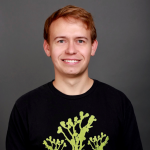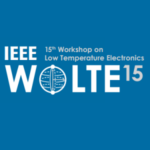News
News Article: Interaction Detection with Attosecond Perfection
Mina Bionta explores how light interacts with matter by capturing snapshots of those interactions on the timescale of the light’s oscillations.
See the article in APS Physics here.
QNN Quarterly Newsletter
Dear QNN Group Members, Alums and Affiliates,
Welcome to another issue of our quarterly(ish) newsletter. The group is feeling stable these days… new programs are starting and old ones are ending at about the same rate.
The high points of the past quarter were definitely Navid and Marco getting their PhD’s, and Owen, Andrew, and Emma getting their Master’s thesis completed. Congratulations all! We also have welcomed some new group members and are excited to watch them progress!
We hope you are all well, and feel free to drop a line to let us know your news!
Best regards,
Karl and Donnie
Comings and Goings
The last few months we’ve welcomed the following new group members:
- Lu-Ting Chou, Visiting Student
- Shruti Nirantar, Visiting Scholar
- John Gumm, CQN Visiting Student
- Daniel Watkins, CQN Visiting Student
The following members have now left and become alumni group members:
- Navid Abedzadeh, Graduated! Joining HyperLight, in Cambridge MA.
- Marco Turchetti, Graduated! Going to IBM in New York
- Andrew Sorenson, Graduated! Off to Navy Pilot School
- Eyosias Gebremeskel, UROP
- Uyen Nguyen, UROP – Graduated!
- Esteban Vizcaino, UROP
- Joseph Feld, UROP
Theses!
E. Batson, “Reduced Indium Tin Oxide as a Transparent Superconductor,” M.S. Thesis, Massachusetts Institute of Technology, 2022.
O. Medeiros, “Investigation of Thin Film Supercurrent and Photodetection in Wide Niobium Nitride Wires,” M.S. Thesis, Massachusetts Institute of Technology, 2022.
A. Sorenson, “Superconducting Electronics for Breakthrough Startshot Communications,” Master of Engineering in Electrical Engineering and Computer Science, Massachusetts Institute of Technology, 2022.
N. Abedzadeh, “Techniques for Reducing Beam-Induced Damage in Electron Microscopy,” Doctoral Thesis, Massachusetts Institute of Technology, 2022.
M. Turchetti, “Nano Vacuum Channel Devices for Electronics and Ultrafast Nanophotonics,” Doctoral Thesis, Massachusetts Institute of Technology, 2022.
Awards
Honorable mention in the PAS Division of Laser Science student Poster Contest at CLEO 2022: Dip Joti Paul, “Infrared Refractive Index Measurement of Niobium Nitride Thin-Film via FTIR”.
Alessandro Buzzi and Matteo Castellani won the EIPBN 2022 Award for “Best Electron Micrograph”. The image A Maze in Grace is at the bottom of this newsletter!
Alessandro Buzzi won an award for “Best Presentation” at WOLTE 15 in June.
John Simonaitis won best poster for “Coherent interactions between electrons and photons in a 10 KeV scanning electron microscope” at the Quantum Electron Optics Conference sponsored by the Wilhelm and Else Heraeus Foundation in Nahsholim, Israel.
Publications (4/1/22 – 7/1/22)
[1] M. Prentiss, A. Chu, and K. K. Berggren, “Finding the infectious dose for COVID-19 by applying an airborne-transmission model to superspreader events,” PLOS ONE, vol. 17, no. 6, p. e0265816, Jun. 2022, doi: 10.1371/journal.pone.0265816.
[2] L. Shao et al., “Electrical control of surface acoustic waves,” Nat Electron, pp. 1–8, Jun. 2022, doi: 10.1038/s41928-022-00773-3.
[3] M. Turchetti et al., “Electron Emission Regimes of Planar Nano Vacuum Emitters,” IEEE Transactions on Electron Devices, vol. 69, no. 7, pp. 3953–3959, Jul. 2022, doi: 10.1109/TED.2022.3175706.
Talks (4/1/22 – 7/1/22)
[1] K. K. Berggren, “Superconducting-nanowire single-photon detectors,” presented at the SPIE Defense + Commercial Sensing, Virtual, Apr. 06, 2022.
[2] T. X. Zhou, “Quantum Applications Build on Creative Nanofabrication,” presented at the 2022 NNCI Etch Symposium, University of Pennsylvania, Apr. 23, 2022. [Online]. Available: https://www.nano.upenn.edu/2022-etch-symposium/
[3] P. D. Keathley, “Seeing the Light Wave: On-chip Sampling of Electric Fields with Attosecond Resolution,” presented at the Conference on Lasers and Electro-Optics (CLEO), SF3E.5, San Jose, California, May 12, 2022.
[4] E. Batson, “Fabrication of Microwires on Reduced ITO Nanoparticles,” presented at the EIPBN 2022, New Orleans, Jun. 01, 2022.
[5] A. Bechhofer, “Stochastic methods for geometrical optimization of nano vacuum electronics,” presented at the EIPBN 2022, New Orleans, LA, Jun. 02, 2022.
[6] M. R. Bionta, “Chip-based attosecond time-domain spectroscopy,” presented at the 53rd Annual Meeting of the APS Division of Atomic, Molecular and Optical Physics, Virtual, Jun. 01, 2022.
[7] M. Castellani, “Design of a Superconducting Nanowire-Based Synapse for Energy-Efficient Spiking Neural Networks,” presented at the EIPBN 2022, New Orleans, LA, Jun. 02, 2022.
[8] M. Castellani, “A Superconducting Nanowire Platform for Artificial Spiking Neural Networks,” presented at the WOLTE 15, Matera, Italy, Jun. 08, 2022.
New Publication: “Large-Area Superconducting Nanowire Single-Photon Detectors for Operation at Wavelengths up to 7.4 μm”
The optimization of superconducting thin-films has pushed the sensitivity of superconducting nanowire single-photon detectors (SNSPDs) to the mid-infrared (mid-IR). Earlier demonstrations have shown that straight tungsten silicide nanowires can achieve unity internal detection efficiency (IDE) up to λ = 10 μm. For a high system detection efficiency (SDE), the active area needs to be increased, but material nonuniformity and nanofabrication-induced constrictions make mid-IR large-area meanders challenging to yield. In this work, we improve the sensitivity of superconducting materials and optimize a high-resolution nanofabrication process to demonstrate large-area SNSPDs with unity IDE at 7.4 μm. Our approach yields large-area meanders down to 50 nm width, with average line-width roughness below 10%, and with a lower impact from constrictions compared to previous demonstrations. Our methods pave the way to high-efficiency SNSPDs in the mid-IR band with potential impacts on astronomy, imaging, and physical chemistry.
A complete description of the work may be found here.
John Simonaitis wins Best Poster Award
 John Simonaitis won best poster for the work “Coherent interactions between electrons and photons in a 10 KeV scanning electron microscope” and it was upgraded to a talk because of it. The “Quantum Electron Optics” conference from June 27-30, 2022 and was sponsored by the Wilhelm and Else Heraeus Foundation in Nahsholim, Israel.
John Simonaitis won best poster for the work “Coherent interactions between electrons and photons in a 10 KeV scanning electron microscope” and it was upgraded to a talk because of it. The “Quantum Electron Optics” conference from June 27-30, 2022 and was sponsored by the Wilhelm and Else Heraeus Foundation in Nahsholim, Israel.
Alessandro Buzzi wins “Best Presentation” at WOLTE15
 Alessandro Buzzi won the award for Best Presentation at WOLTE15 for his presentation entitled “Building blocks design for superconducting nanowire asynchronous logic” which took place on June 8, 2022.
Alessandro Buzzi won the award for Best Presentation at WOLTE15 for his presentation entitled “Building blocks design for superconducting nanowire asynchronous logic” which took place on June 8, 2022.
Presentation Abstract:
Superconducting nanowires have emerged in recent years as a candidate for low-power electronics [1]. In particular, their inherent spiking behavior [2] and the possibility of integration with superconducting loop memory cells [3] make them an excellent candidate for asynchronous spiking computing. Although some proof-of-concept devices have been demonstrated, the lack of reliable standard cells that combine memory and logic functions has hindered the design of larger circuits.
We present an approach for digital logic based on niobium nitride superconducting nanowires, in which the information is stored in a superconducting loop and altered asynchronously by the inputs.
Additionally, we show how building blocks are designed and combined to reproduce circuits equivalent to lookup tables, flip-flops, shift registers, and linear feedback shift registers.
Fig.1 displays a destructive readout memory, our elementary building block. This device consists of a superconducting loop with two parallel branches. The constant bias current is transferred between the branches using two nanocryotrons (nTron), three-terminal components able to modulate the
switching current of a superconducting channel from a gate input [1]. This basic design allows for further functionalities by slight modifications of the structure. For example, another input on the left side can be added to obtain an OR gate, moving the inputs on the right branch will produce a NOR gate while the combination of multiple loops can be used to make sequential elements and circuits.
We simulated the above-mentioned circuits with SPICE and verified their behavioral and electrical characteristics. Moreover, we experimentally demonstrated the correct function of the destructive readout memory (Fig. 1). We plan to fabricate and characterize the single-loop gates and integrate them into multi-block structures. Our work paves the way for the realization of asynchronous superconducting logic. We aim to develop a reliable system of standard cells that would provide a basis for future integrations of ultra-low-power circuits.